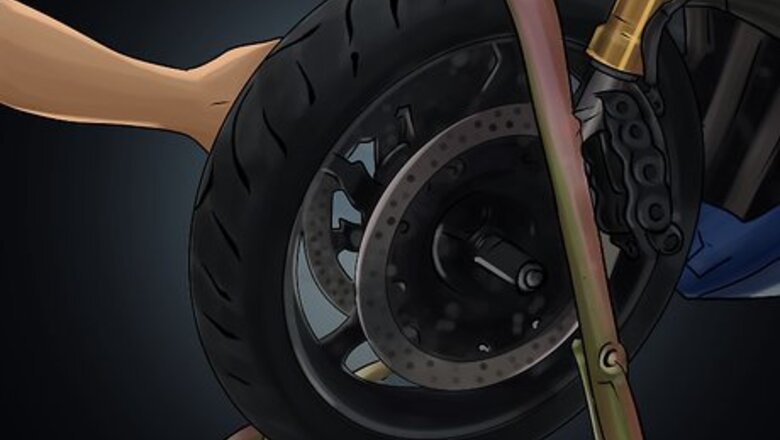
views

Remove the front wheel. Follow your bike’s instructions on how to do this. As a general rule, you’ll need to either chock the front wheel or at least have the front brake engaged to when breaking the front axle bolt loose. Once that’s loose, you’ll need to jack the front up. There are two ways to do that. One is to use a jack under the engine and lift the front wheel. The other option is to use a front triple tree stand which lifts the bike using the triple tree. This is our preference as it offers a bit more stability than a jack. You’ll also need to disconnect the brakes and any other cables that might be connected to the forks such as speed sensors.
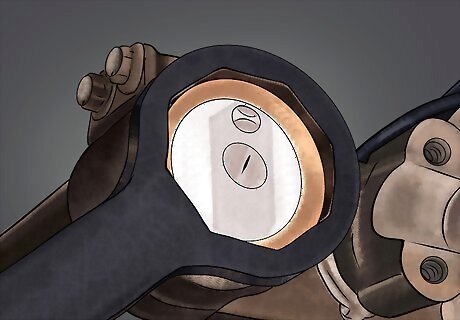
Remove the fork cap and/or plug. Here’s your first challenge. Depending on your bike, the forks will either have a cap you can simply screw off or in some rarer cases a plug that sits on top. In either case, you’ll also need to remove a clip that holds the plug or the bottom of the cap in place. Because the front of your bike is now lifted up, the forks will be uncompressed making this task slightly easier. Push down on the cap/plug with an appropriate tool and using your other hand, use a flat head screwdriver or a box cutter to pry out the clip.
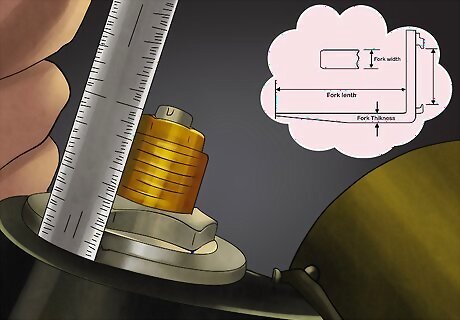
Measure the height of the forks. The exact position that your forks sit in your triple tree determines the front end geometry of your bike so it’s important to that you measure this. Otherwise your bike’s handling could be vastly different upon re-installation. Using a ruler, measure how far up the fork extends above the triple tree (if at all). You’ll usually find there’s a mark on the top of the triple tree – measure from here as the height the fork is above the triple tree will vary depending on where you take the measurement.
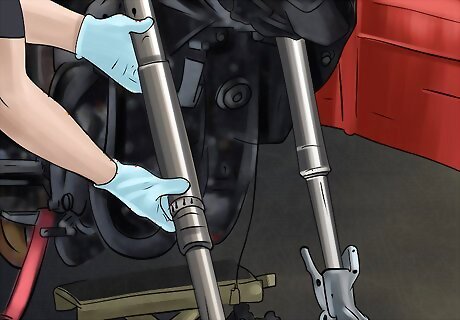
Remove the forks. Loosen the bolts on the top and bottom of the triple tree. Once fully wound out, you’ll be able to gently slide each fork down and out of the clamps. When pouring the oil out of the forks, don’t just turn them upside down as that could potentially damage the springs inside. Instead, gently pour the fork oil out and ensure you grab any washers, spacers and the spring as they fall out.
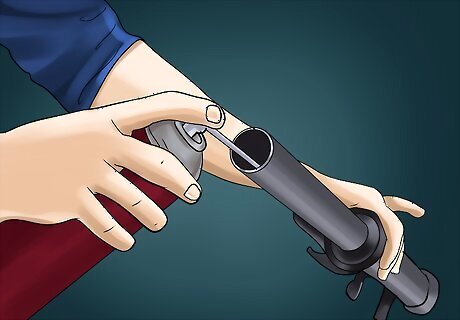
Do a preliminary clean. Pouring out the fork oil will still leave plenty of oil left inside. Get a degreaser and spray liberally inside the fork. Make sure you pump the forks up and down to get the degreaser to mix through both the inner and outer fork. Leave the degreaser in for a few minutes and then clean them out with water.
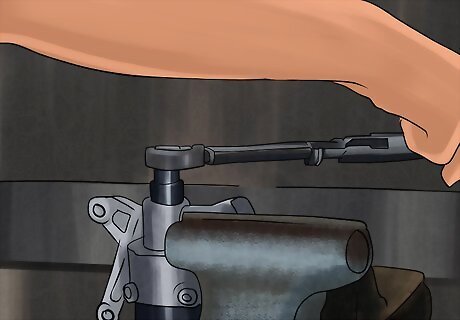
Unscrew the damping rod bolt. At the bottom of the fork will be a bolt that holds the damping rod in place. You can skip this step if you want but you won’t get as much of the old fork oil out if you do. The location of the bolt is generally awkward so you might need to get creative to get enough leverage to loosen it. Another problem can be that the damping rod itself rotates while you’re trying to unscrew the bolt. If you find that this is the case, compress the fork and using the spring you just removed, put it back in. Pushing down on the spring will hopefully hold the damping rod in place – at least enough to get the bolt loose. If this doesn’t work, a piece of dowel (or other appropriately shaped and long enough object) pushed into the top of the damping rod can also work.
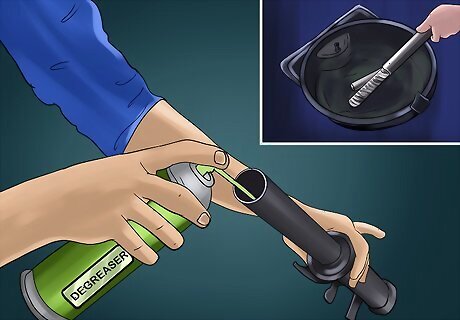
Do a final clean. With the bottom bolt removed, spray some more degreaser inside the fork and pump them up and down. Let the degreaser sit and then cleanse with water. Leave the forks to dry. Give the springs, spacers and damping rod a spray with degreaser followed by a rinse of water too. Once the bolt is loose, the damping rod will now be fee to come out, so gently slide it out of the fork.
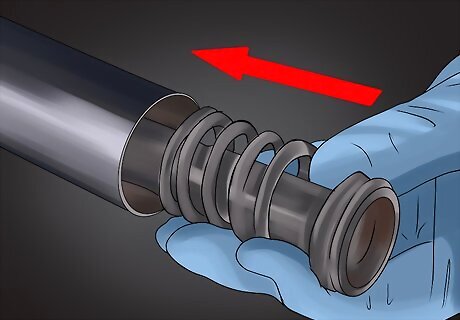
Install the damping rod. Put some threadlock on the bolt that holds the damping rod in place and screw it in. Just like when removing the damping rod, compress the fork and with the spring, hold the damping rod in place to prevent it from rotating.
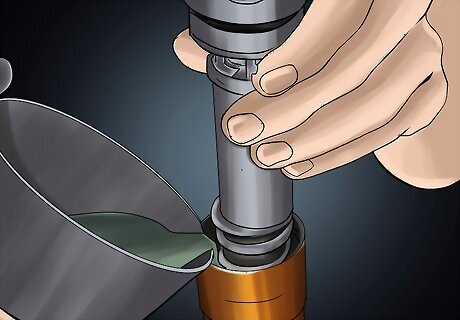
Pour new oil. Refer to your bike’s service manual for how much oil (and the weight) to put into your forks. Because in this guide we’re not taking the forks completely apart, there will still be old oil in them. Therefore, there’s two measurements to take note of – first is the amount of oil and secondly is the distance of the oil from the top of the forks. To accurately measure this as per manufacturers specifications, the damping rod should be in but nothing else – no spring, spacers, et cetera. Ensure you refer to the owners manual in case they recommend differently, however. Ensure the fork is standing vertically on a level surface. Pour in the amount of oil recommended by the manufacturer. Before putting it all in, pump the forks up and down to circulate the oil throughout and remove any air trapped. Now, refer to the second measurement which will say how far from the top of the fork the oil should sit. The best way to do this is using a fork oil measuring gauge which is simply a syringe with some flexible and fixed tubing. Simply measure the appropriate distance from the ring of the measuring gauge and set as so, then sit it on top of the fork. If you pull on the syringe and only suck in air, it means you don’t have enough oil in. Top up the oil and then pull on the syringe again. If you initially suck oil up, that’s fine and continue to do so until you start to only get air. Once that happens your oil level is correct.
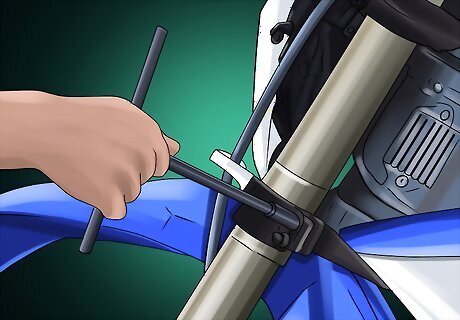
Re-install the forks. Slide the forks up through the triple tree. Tighten the bolts on the triple tree by hand – just ensure there’s enough slack still to move the forks up and down slightly to position them correctly. Using the measurement you took before removing the forks to ensure that they’re sitting the appropriate distance above the top of the triple tree. Tighten the bolts as per their torque specifications.
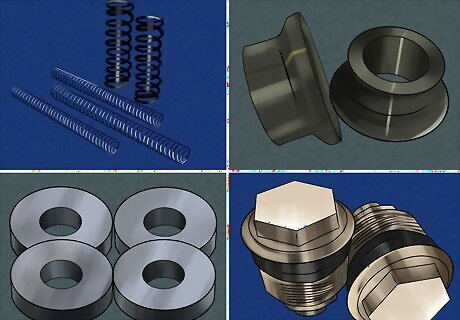
Replace the components. Gently put in the springs, spacers and washers followed by the fork caps. You’ll need to reinstall the clip holding the cap/plug in place but thankfully putting it in is easier then removing. Replace the front wheel and all other components and you’re finished.
















Comments
0 comment